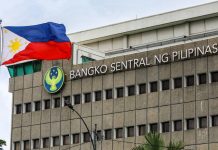
ILOILO City – The Philippine headline inflation rate rose to a new nine-year high in August at 6.4 percent but Western Visayas exceeded the record national average at a staggering 7.4 percent, data from the Philippine Statistics Authority (PSA) showed.
Fourteen regions out of 17 recorded a higher annual inflation in August compared with their previous month’s rates.
Among the regions outside the National Capital Region, the highest mark-up of 9 percent was observed in Region 5 (Bicol Region) while the lowest rate of 3.6 percent remained in Region 3 (Central Luzon). Region 6 comes in at fourth after Bicol Region, the Autonomous Region in Muslim Mindanao (8.1 percent) and Soccsksargen (7.9 percent). In NCR, inflation went up at 7 percent in August.
Department of Trade and Industry (DTI) Iloilo provincial director Diosdado Cadena was surprised by the August inflation rate for Western Visayas, noting that the region is largely self-sufficient, relying little on imports from other regions so prices should thus be stable.
“In Western Visayas damu kita ya local producers [farmers and fisherfolk], [by that logic] Manila [and NCR] should be the highest,” Cadena told Panay News after a press conference on the agency’s price monitoring efforts at Muelle Deli and Restaurant. “Ang ma-intervention ta lang is to address the supply by talking to the concerned agencies. If agri products, sa Department of Agriculture, prime commodities sa amun sa DTI. At the retail end, we also need to ensure nga ga-comply ang tanan sa fair trade laws to avoid profiteering.”
“Ang inflation naga-indicate kung paano gahulag ang mga presyo sing goods, especially ang mga agricultural products and prime commodities,” continued Cadena. “Ang masubo sa mataas nga inflation, ang igo gid sini ang mga pigado because of the higher prices, especially sing mga kalan-on kag mayor nga kilanlanon.”
In regions outside the NCR, higher upticks were recorded in the following commodity groups, fueling faster inflation, according to the PSA:
- Food and Non-Alcoholic Beverages, 8.4 percent;
- Housing, Water, Electricity, Gas and Other Fuels, 4.6 percent;
- Furnishing, Household Equipment and Routine Maintenance of the House, 3.5 percent;
- Health, 3.8 percent;
- Recreation and Culture, 2.5 percent; and
- Restaurant and Miscellaneous Goods and Services, 3.7 percent.
Based on data from the PSA, inflation in Western Visayas began to rise at the start of the year, jumping from 2.1 percent in December 2017 to – in just a month – 4.3 percent in January 2018.
Comparing year-on-year, inflation in Region 6 was at 1.5 percent in August 2017, a far cry from the 7.4 percent recorded in August 2018.
Data released by the statistics office showed the national inflation clocked in at 6.4 percent in August, the fastest in over nine years since inflation came in at 6.6 percent in March 2009.
It was faster than the 5.9-percent forecast of the Bangko Sentral ng Pilipinas, which cited a range of 5.5 to 6.2 percent.
The Department of Finance earlier forecast inflation at 5.88 percent, with food and non-alcoholic beverages contributing 2.98 percentage points.
Five commodity groups registered higher increases, primarily alcoholic beverages and tobacco, which surged by 21.9 percent.
The food and non-alcoholic beverages index was up by 8.5 percent, miscellaneous goods and services by 4 percent, household equipment up by 3.5 percent, and recreation and culture by 2.4 percent.
“The rest of the commodity groups either moved slower or had negative annual rate with the index of clothing and footwear retaining at its previous month’s annual growth rate of 2.4 percent,” the PSA said./PN







